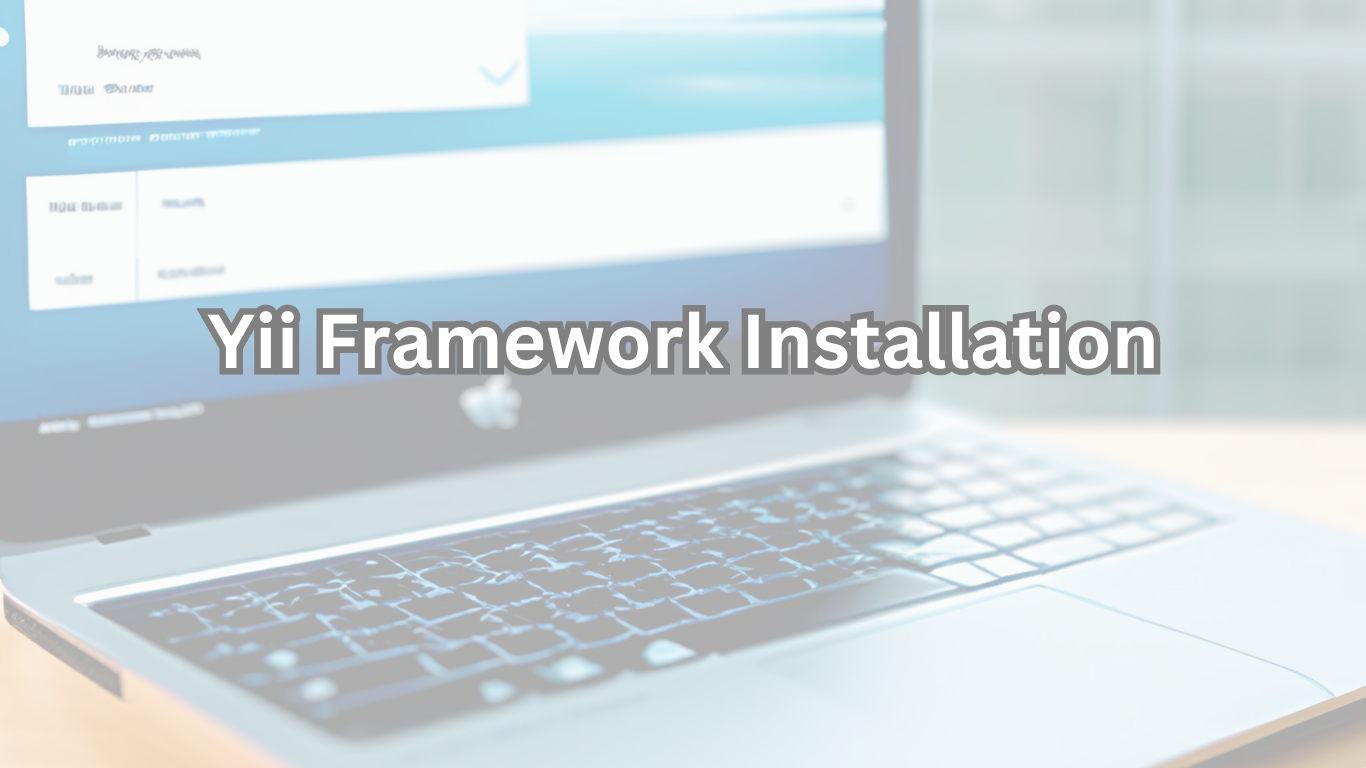
Yii Framework Installation: Easy and Simple Guide
In this article, we will see the Yii Framework Installation Guide.
Table of Contents
The choice of the correct framework is at stake as web development evolves. One framework that has consistently stood out for its efficiency, flexibility, and performance is Yii (pronounced “yee” or [ji:]).
Yii, which stands for “Yes, It Is!”, is a high-performance PHP framework known for its simplicity, extensibility, and ease of use. In this article, we’re going to take a look at the key features and advantages of Yii to understand why it has become so popular amongst developers.
Yii Framework Installation
Before we begin, let’s make sure your system meets the prerequisites for the Yii Framework. Don’t worry; it’s a breeze! You only need PHP 7.4 or higher, Composer (our trusty dependency management tool), and a web server like Apache or Nginx.
Just ensure these requirements are met and configured correctly on your machine, and you’ll be good to go!
You can install Yii Framework with two methods: 1) Using Archive File and 2) Using Composer. Yii is a PHP framework for developing large-scale web applications rapidly. Let’s see for Yii Framework Installation in the following two ways:
1). Yii Framework Installation Using Archive File
- First, download the Yii framework from Github or Direct download Yii 2 Link .
- Once you have downloaded this file, Extract the archive files, and copy and paste them to your web-accessible folder. In my case, it’s in C:/wamp64/www/YourProjectName.
- Now type the following code in the command prompt (cmd) to initialize the init file C:/wamp64/www/YourProjectName init OR C:/wamp64/www/YourProjectName php init
- After that create a new database. let’s configure database details. C:/wamp64/www/YourProjectName/common/config/main-local.php Note: if the main-local.php file is not there create it by yourself and put the following code in itCode:
return [ 'components' => [ 'db' => [ 'class' => 'yii\db\Connection', 'dsn' => 'mysql:host=localhost;dbname=yii2advanced', 'username' => 'root', 'password' => '', 'charset' => 'utf8', ], 'mailer' => [ 'class' => 'yii\swiftmailer\Mailer', 'viewPath' => '@common/mail', // send all mails to a file by default. You have to set // 'useFileTransport' to false and configure a transport // for the mailer to send real emails. 'useFileTransport' => true, ], ], ];
- Next is database migration, let’s apply the migration with the console command C:/wamp64/www/YourProjectName/ yii migrate OR C:/wamp64/www/YourProjectName php yii migrate
All done. Let’s check your frontend & backend:
Frontend Files: C:\wamp64\www\YourProjectName\frontend\web
URL: http://localhost/YourProjectName/frontend/web/
Backend Files: C:\wamp64\www\YourProjectName\backend\web
URL: http://localhost/YourProjectName/backend/web/
I hope it helps! In case you want to install it in other ways, see below.
2). Yii Framework Installation Using Composer
Let’s give a warm welcome to Composer, your helpful companion in managing dependencies. If you haven’t installed Composer yet, don’t fret! Head over to the official Composer website (https://getcomposer.org/) and follow their simple installation instructions tailored to your operating system.
Once Composer is up and running, confirm its success by running the composer command in your terminal. You’re one step closer!
Two install Yii Framework using composer, you should have already installed composer. you can check whether the composer is installed or not using the composer -v command
Step 1). Open the terminal and you can install the Yii application template by running the following command under a Web-accessible folder:
composer create-project --prefer-dist yiisoft/yii2-app-basic my-yii-app
This will install the latest stable version of the Yii application template in a directory named my-yii-app. You can choose a different directory name if you want.
Step 2). After installation is done, go to your project directory by running the “cd my-yii-app” command in your terminal.
Step 3). You can start the application by running the following console command while in the project directory:
php yii serve php yii serve --port=8888
Step 4). Now, You can use your browser to access the installed Yii application with the following URL:
http://localhost:8080/
Congratulations! You have successfully installed the Yii Framework and created your first Yii application. Now you’re ready to explore the vast capabilities of this powerful framework and dive into the world of web development.
You can follow below video for the Yii framework installation guide below:
Conclusion:
Yii Framework installation offers a seamless installation process that sets you up for success in your web development endeavors. By following these steps, you can quickly get started with Yii and leverage its rich features to build exceptional web applications.
Remember to consult the official Yii documentation (https://www.yiiframework.com/doc/guide) for detailed information on using the framework and maximizing its potential. Happy coding! I hope this article helps you with the Yii Framework Installation!